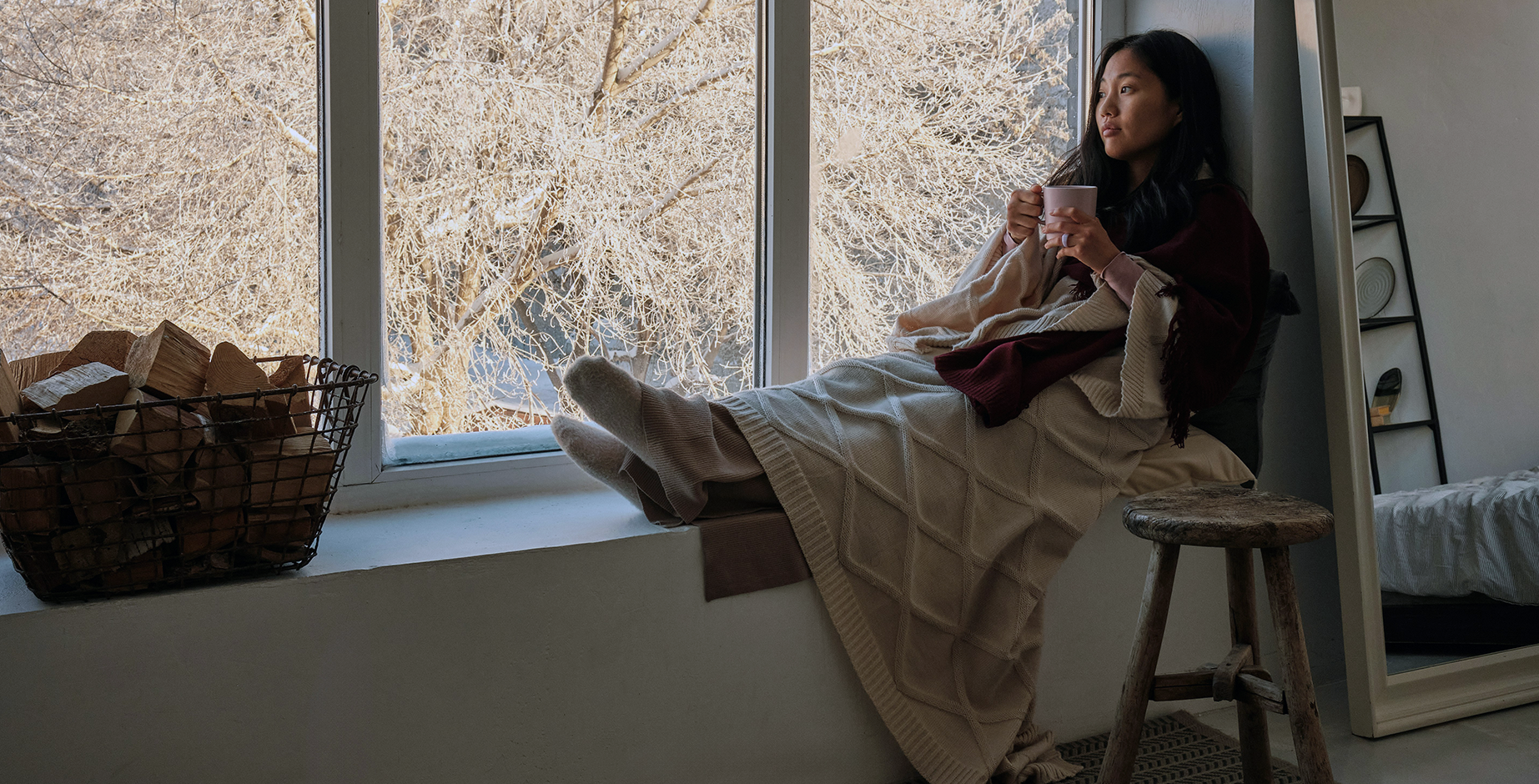Share This Story
It’s that time of year again: the sun sets earlier, there’s a chill in the night air, and you might notice a dip in your mood or energy levels. If winter isn’t your favorite season and summer feels like your time to shine, that’s perfectly okay. Feeling a bit of “cabin fever” as winter drags on while eagerly awaiting spring’s arrival is normal. If however, the dread of winter hits before the season even starts, lingers throughout, and makes it hard for you to function, it could be more than just the winter blues. If this sounds familiar, you’re not alone. You might be among the millions of Americans estimated by the National Institute of Mental Health (NIMH) to experience Seasonal Affective Disorder (SAD). The good news is you don’t have to tough it out alone. You can take steps to feel better and find support to not just survive, but truly thrive this winter.
What is SAD?
Seasonal Affective Disorder is a type of depression so it shares many symptoms of depression that range from mild to severe, and can affect your work, hobbies, and relationships. There are some differences though in that SAD tends to return around the same time (season) each year, for two or more years, with each episode lasting around 4-5 months before improving. While SAD can occur during the summer, the winter variety is more common. With the winter type, symptoms usually start creeping in in the fall or winter when daylight wanes, and eases up in the spring or summer as the daylight hours increase again.
If you’re struggling in the colder months but feel better the rest of the year, keep an eye out for these winter SAD symptoms:
- Craving comfort foods (especially carbs)
- Gaining weight
- Withdrawing from social activities (feeling like hibernating)
- Sleeping more than usual, but still feeling exhausted
Why Does SAD Happen?
Both the NIMH and the Mayo Clinic describe how seasonal changes in daylight can disrupt our biological clock (circadian rhythm) and impact the balance of chemicals in our brains. Here’s a closer look at the chemicals related to SAD that can be affected by these changes in daylight:
- Serotonin: This brain chemical helps regulate mood. Reduced daylight can lower serotonin levels, leading to a low mood.
- Melatonin: This chemical affects mood and sleep. As daylight decreases, melatonin levels can rise (readying us for sleep), causing fatigue and lower mood.
- Vitamin D: We produce Vitamin D through sun exposure, which helps boost serotonin function. Less sunlight means less Vitamin D, potentially affecting your mood.
Who Gets SAD?
The Cleveland Clinic estimates that around 5% of adults in the U.S. experience SAD, typically starting in young adulthood and more frequently affecting those assigned female at birth. Several factors can influence your risk, including a personal or family history of mental health conditions—depression, ADHD, or bipolar disorder to name a few. Additionally, living far from the equator or in areas with long stretches of cloudy weather increases the likelihood of developing SAD. For instance, people in sunny states like Florida and Texas experience fewer cases of SAD compared to those in northern states like New York or Massachusetts.
What Helps with SAD?
Not everyone with SAD needs professional treatment, there are several strategies you can try to manage it effectively. The American Psychiatric Association offers these practical tips:
- Get outside: Sun exposure is key in managing SAD. Aim to spend some time outside each day, even if it’s just sitting by a sunny window or going for a short walk or hike.
- Stay connected: Keep in touch with friends and family, even if you feel like retreating. Social support can make a big difference. Plan a game or movie night, grab coffee, or have regular chats with loved ones—staying connected to others causes our body to release “feel good” chemicals and helps lift your mood.
- Stay active: Engaging in physical activity, even something as simple as walking, can help boost your mood and energy levels. Movement can enhance your overall well-being through the winter months.
- Plan ahead: If you know that winter brings on the blues, start planning ahead. Having an action plan is like building a toolbox of things to pull from when needed. It can give you things to look forward to and a sense of control to better manage SAD.
When and Why Should I See a Psychiatric NP?
If you’re unsure whether you’re dealing with SAD or something else, you don’t need to try to figure it out on your own, mental health professionals are here to help. A psychiatric nurse practitioner (psych NP) can assist with diagnosis, provide validation, and offer personalized support and treatment options. Whether you need therapy, medication, or both, a psych NP can guide you through it. It’s best to plan ahead and seek help before the darkest days of winter hit. Ideally, that means reaching out in early fall, but support is available whenever you need it. Remember, you don’t have to go it alone this winter. Professional help is available to provide you the support you need to not just survive, but thrive this winter season.
Sources:
https://www.apa.org/topics/depression/seasonal-affective-disorder
https://my.clevelandclinic.org/health/diseases/9293-seasonal-depression
https://www.mayoclinic.org/diseases-conditions/seasonal-affective-disorder/symptoms-causes/syc-20364651#risk-factors
https://www.nimh.nih.gov/health/publications/seasonal-affective-disorder#part_6688
All content and information on this website are for informational purposes only. None of the material is intended to be a substitute for professional medical advice, diagnosis, or treatment. This information does not create any client-provider relationship. Please consult with your mental health care provider before making any health care decisions or for guidance about a specific medical condition.








